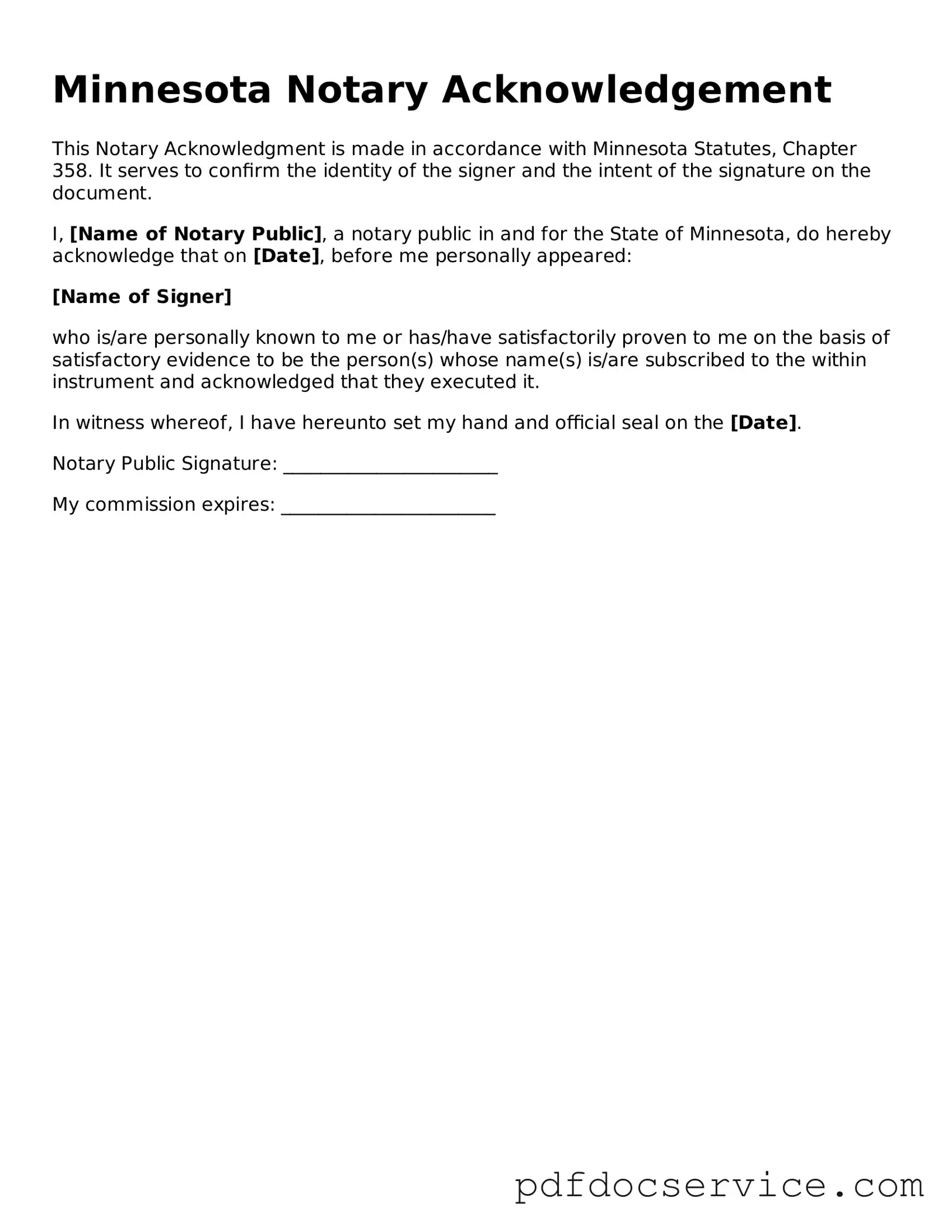The Minnesota Notary Acknowledgement form serves as a crucial document in the realm of legal transactions, providing a means for individuals to verify their identities and affirm their signatures in the presence of a notary public. This form is commonly utilized in various situations, including the signing of contracts, deeds, and other important legal instruments. By completing this form, individuals ensure that their signatures are authentic and that they have willingly entered into the agreement. The notary public plays an essential role in this process, as they are responsible for confirming the identity of the signers and witnessing the signing of the document. Additionally, the form includes specific details such as the date of the acknowledgment, the names of the signers, and the notary's official seal, which adds an extra layer of validity to the document. Understanding the nuances of the Minnesota Notary Acknowledgement form is vital for anyone engaging in legal transactions, as it enhances the reliability and enforceability of the documents involved.
